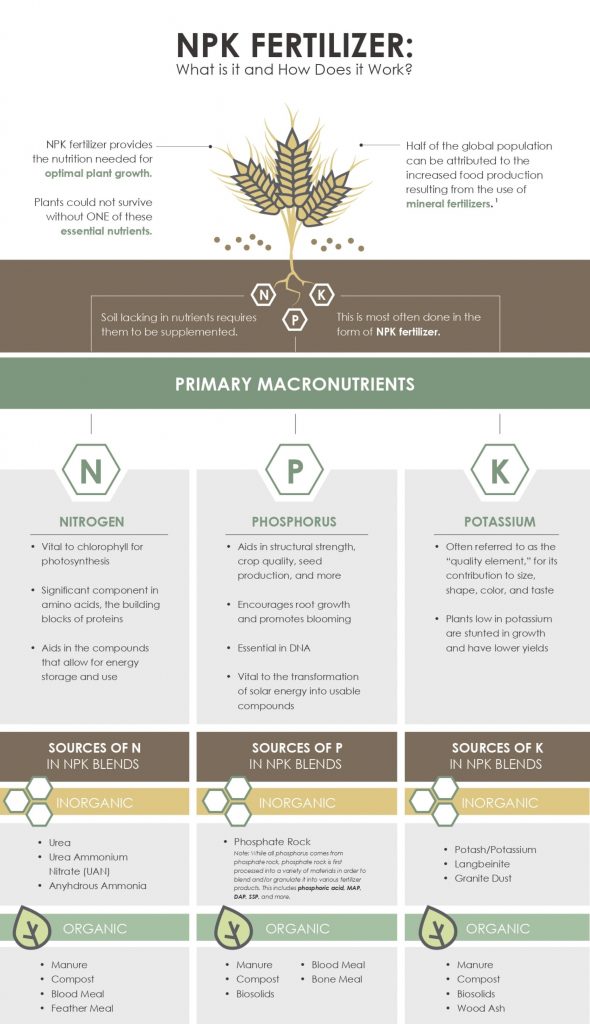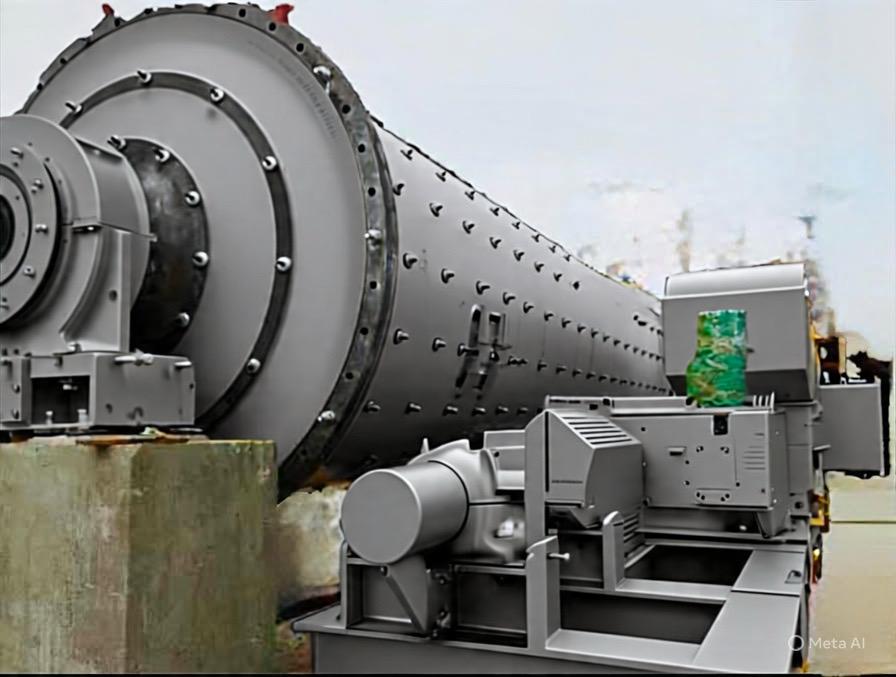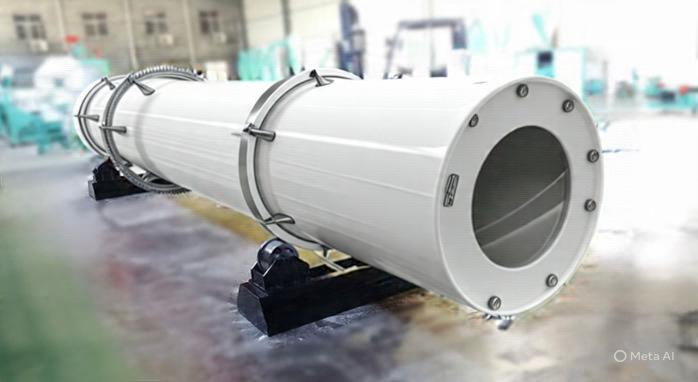NPK Fertilizer production processes
The various steps involved in the manufacture of finished fertilizer products, from raw materials through intermediate products. Fertilizers are produced as straight or multi-nutrient products, as described in the following sections.
Nitrogen Fertilizers
The intermediate product in the case of nitrogen (N) fertilizers is ammonia (NH3), which is produced by combining nitrogen extracted from the air with hydrogen from hydrocarbons such as natural gas, naphtha or other (heavier) oil fractions, and hydrogen which is obtained by means of the Steam Reforming Process. Approximately 85% of the anhydrous ammonia plants in the EU use natural gas. Measures to improve production processes have focused on reducing the amount of hydrocarbon feedstock required to produce a tonne of ammonia.
The further processing of ammonia produces straight N fertilizers such as urea, ammonium nitrate and calcium ammonium nitrate, as well as solutions of the above fertilizers and ammonium sulphate. Ammonia is also the main component of many multi-nutrient fertilizers.
Phosphate Fertilizers
Rock phosphate (27 – 38% P2O5) is the raw material source from which all types of phosphate fertilizers are produced, with the minor exception of basic slag (12 – 18% P2O5), which is a by-product of steel production.
In its unprocessed state, rock phosphate is not suitable for direct application, since the phosphorus (P) it contains is insoluble. To transform the phosphorus into a plant-available form and to obtain a more concentrated product, phosphate rock is processed using sulphuric acid, phosphoric acid and/or nitric acid. Acidulation by means of sulphuric acid produces either phosphoric acid, an intermediate product in the production of triple superphosphate (TSP), MAP, DAP and complex fertilizers, or single superphosphate (SSP). Acidulation using phosphoric acid produces TSP, and acidulation using nitric acid produces NP slurries for use in the manufacture of complex fertilizers.
Potash Fertilizers
Most potassium (K) is recovered from underground deposits of soluble minerals, in combination with either the chloride or sulphate ion. Although the low-grade, unrefined material can be applied direct, the minerals are normally purified, to remove sodium chloride, and concentrated before use. The resulting potash fertilizers are applied as straight K fertilizers such as potassium chloride and potassium magnesium sulphate or are used in the manufacture of multi-nutrient fertilizers.
Multi-nutrient Fertilizers
Most multi-nutrient fertilizers produced in the EU are either complex fertilizers, each granule of which contains a uniform ratio of nutrients, or blends. Typically, complex NPK fertilizers are manufactured by producing slurries of ammonium phosphates, to which potassium salts are added prior to granulation or prilling. PK fertilizers, on the other hand, are generally produced as compounds by the steam granulation of superphosphates (SSP or TSP) with potassium salts.
FERTILIZER GENERAL DESCRIPTION
Fertilizer is a material that is added to the soil to supply one or more elements required for plant growth and productiveness. The major three elements are nitrogen, potassium and phosphorus), the secondary elements are calcium, sulfur, magnesium, and other elements are boron, manganese, iron, zinc, copper and molybdenum. Fertilizers enhance the natural fertility of the soil or replace the chemical elements taken from the soil by harvesting, grazing, leaching or erosion. Organic fertilizers include poperly managed barnyard manure, compost and green manure. Manure contains nitrogen and phosphate content. It is sometimes modified with superphosphate to make it a better balanced fertilizer. Compost, decayed to a relatively stable, amorphous state, is made from plant materials mixed with manure and some soil. Green manure is a herbaceous plant material plowed into the soil that has not undergone decay. Artificial fertilizers are inorganic fertilizers formulated in appropriate concentrations and combinations supply three main nutrients: nitrogen, phosphorus and potassium (N, P and K) for various crops and growing conditions. N (nitrogen) promotes leaf growth and forms proteins and chlorophyll. P (phosphorus) contributes to root, flower and fruit development. K (potassium) contributes to stem and root growth and the synthesis of proteins. The common inorganic fertilizers include ammonia (82% nitrogen), NPK combinations, urea (46% nitrogen), superphosphate, mono and dibasic ammonium phosphates (containing nitrogen and phosphate), calcium ammonium nitrate, potassium chloride (muriate of potash)
NPK rating
NPK rating (or N-P-K) is used to label fertilizer based on the relative content of the chemical elements nitrogen (N), phosphorus (P), and potassium (K) that are commonly used in fertilizers. The three elements promote plant growth in three different ways. In simple terms, these are:
- N – nitrogen: promotes the growth of leaves and vegetation
- P – phosphorus: promotes root and shoot growth
- K – potassium: promotes flowering, fruiting and general hardiness
Unlike the N number, the numbers for P and K do not reflect the amount of elemental phosphorus and potassium in the fertilizer. Rather they represent the amount of oxide in the form of P2O5 and K2O that would be present in the fertilizer if all the elemental phosphorus and potassium were oxidized into these forms.
Method for converting an N-P-K value to an actual composition
The factors for converting from P2O5 and K2O values to their respective P and K elemental values are as follows:
- P2O5 consists of 56.4% oxygen and 43.6% elemental phosphorus. The percentage (mass fraction) of elemental phosphorus is 43.6% so P = 0.436 x P2O5
- K2O consists of 17% oxygen and 83% elemental potassium. The percentage (mass fraction) of elemental potassium is 83% so K = 0.83 x K2O
- Nitrogen values represent actual nitrogen content so these numbers do not need to be converted.
Using these conversion factors we can determine that an 18?51?20 fertilizer contains by weight:
- 18% elemental (N)
- 22% elemental (P), and
- 16% elemental (K)
We are offering NPK Granulation fertilizer plants design & Engineering
NPK mixture fertilizers are formulated & recommended by agricultural scientists to enhance the output of the crops by giving it specific and exclusive blend of plant nutrients. All the major plant nutrients like Nitrogen, Phosphorus and Potash are mixed in different ratios to make it suitable for specific crops. These specific ratios of NPK & 8 are called grades. The numbers in the grade’s name represents the percentage of N, P2O5 & K2O respectively in the mixture. There are separate grades for Rice, Wheat, Potato and Sugarcane etc.
NPK fertilizer plants are used for production of complex with different concentrations and types, such as inorganic fertilizers and biological fertilizers. These fertilizers can be obtained in the form of uniform granules from 1mm to 4mm size. These granules are white, cream brown, gray or black in colour. Moreover, the production line can be optimized manufacture different grades such as: 15:15:15 etc.
NPK Granulation Plant
Production Process
The raw materials is in the weight belts conveyors are weighed and moved to Mixer for producing homogenous mixture. The material is mixed with the recycle material and taken for granulation in granulation drum where the partial granulation is achieved with very fine jet of water spray. The fine powder gets deposited on a small naclei. This process can be controlled to produce particle size as per the demand of the customers. The material is taken to dryer drum where hot air generated in the furnace is passed though it. The raw material having low melting points easily melts and gets deposited on the nuclei. The high temperature evaporates water and the material is air dried. Further, the material is cooled by blowing ambient air through it in cooler drum. The 1 – 4 mm or desired size homogenous particles are obtained using vibrating screens. The screened particles of uniform size are precisely packed in bag. The oversize material (after crushing) and undersize are recycled.
Flow chart
RAW MATERIALS & THEIR SOURCES
Required raw materials for making NPK mixture fertilizer:
- N : Urea, Di Ammonium Phosphate, Ammonium Chloride, Ammonium Nitrate, Ammonium Sulphate, Mono Ammonium Phosphate Etc.
- Phosphorous as P2O5 : Single Super Phosphate , Triple Super Phosphate, D. A. P. etc.
- Potash as K2O : Potassium Chloride, Potassium Sulphate etc.
- Soil Conditioners & fillers : Gypsum, Sand and Dolomite etc.
- Coating Agents : Soap stone and clay etc.
- Bagging Material : HDPE Bags
Components of NPK Production Line
- Weighing & Blending System
- Belt conveyor
- Furnace
- Rotary drum granulator
- Rotary dryer
- Rotary cooler
- Rotary coating machine
- Packing machine
- Cyclones & dust collector
- Vibrating screen
- Bucket elevator
- Scrubbers
All our NPK production plants are competitively priced, and can be customized to meet the specific demands of the customers. The integrated design allows for easy maintenance and cleaning. The dust in the system can be separated with cyclones and scrubbed with water. High production capacity and low energy consumption further makes our NPK production lines – the preferred choice of leading players in the fertilizer industry.
Specification
| Blended, mixed, granulated Fertilizer formulations made crop specific | |
| Capacity in Tons / day | 200, 400 & 500 |
| Raw Materials Required | Urea, DAP, TDP, SSP, MOP, Gypsum Amm. Chloride, Amm. Sulphate etc. |
| Fuel Required | Furnace oil, Diesel / HSD or Gas |
| Product Quality Standards | Meet all standards like BIS India, Euro & others. |
| Technology Level | Trusted, Tried proved & eco – friendly |
| After Sales Services & Support | Training of line and staff, spares technical support |







